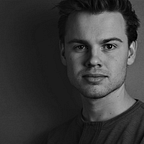About the Mixed Design Course
Mixed design is a self-programming course focusing on using game engines and VR in ship design. The project was done in collaboration with Vard ASA and focused on an incremental upgrade of their ship design, focusing on the bow, hood, bridge, cut-outs and mast.
As a starting point I wanted to focus on VR as a design tool, and evaluate how it was to use from a designers perspective. To do this I have tested multiple tools in different phases of the design process, to find pros and cons in each step of the design process.
To make sure I was using and evaluating VR in a realistic context, I used ship design as a case. In collaboration with VARD ASA, we made a design case based on their needs. By performing a regular design process on a real case, but with a focus on using VR, it has been possible to evaluate VR from a designers perspective. The case has driven the evaluation forward, by following the design process.
Why using ship design as a case?
Large Scale
A ships large scale makes it suitable as a case for using VR as a tool to get closer to the experience of a full scale ship.
Complex Shapes
The complex shape of a ship, together with the large scale, makes it a good case for development of form principles.
Many Categories
Because of the large variation between categories of ships, it is natural to develop a design DNA to maintain consistent design across the product family.
Focus in the course
Design Focus
The main design focus have been aesthetics, form and how to build a brand identity and a product family through shape.
Method Focus
During the course I have had a major focus on how VR can be used as a tool in the design process, and finding pros, cons and limitations.
Skill Focus
Develop skills in different types of 3D modelling, with focus on poly-modelling for real time rendering and game-engines.
